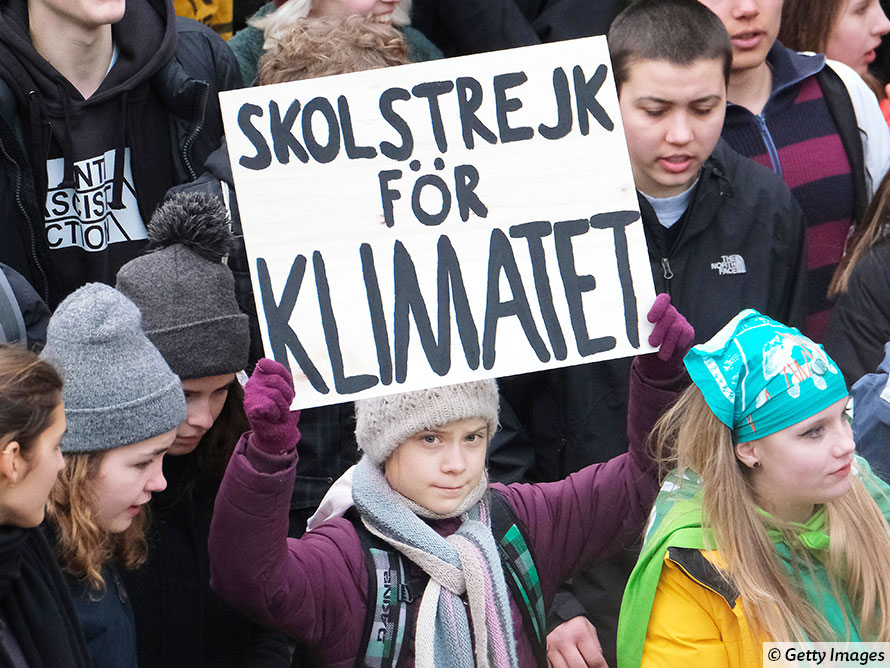By choosing sustainable fabrics and supporting genuinely ethical clothing brands we can slow down the spread of a growing, but not yet fully understood health crisis, warns Saatvika Vadapalli, 13, from the Deutsche internationale Schule Johannesburg.
The clothes we wear today are stitching sicknesses into the bodies of tomorrow.
Fast fashion – an industry that feeds off on rapid production and inexpensive clothing – has quietly become one of the most venomous donors to our environmental and public health crisis.
At the centre of this problem lies a big factor that most clothing consumers never think about: plastic.
Polyester, nylon, acrylic, and rayon dominate the shelves and racks of the major clothing retailers. Loved for their affordability, these synthetic fabrics have a large and hidden cost.
Every time we wash or wear them, they shed tiny plastic fibres also known as nano-plastics. So small they are invisible to the naked eye, they nevertheless have the power to destroy ecosystems and, according to a recent industry report, human cells (The Environmental Impact of Fast Fashion, Explained, Rashmila Maiti, 2025, getwetprojectblog.com)
Nano plastics, established as particles smaller than 1,000 nanometers, are the consequence of this recent fashion obsession. Unlike micro-plastics, which have recently gained attention, nano-plastics are even more deceptive. They are small enough to pass through filtration systems in washing machines and wastewater plants. From there, they flow freely into rivers, oceans, and in the end, our bodies (Farber, 2024).
According to Kam Sripada, a neuroscientist from the Norwegian University of Science and Technology (NTNU), it is possible that children are exposed to more nano plastics than adults are (Henderson, 2022).
And research has shown plastics in placental tissue, breast milk, blood, and even the lungs of unborn babies. These particles do not just pass through human bodies, they actually accumulate. They can cross protective mechanisms, disrupt hormonal activity, and act as holders for toxic chemicals. While their long-term health effects are still under investigation, early research links nano-plastic exposure to inflammation, reproductive disorders, and developmental issues.
Fast fashion is one of the biggest reasons for this crisis. Brands are manufacturing clothing faster than ever, with some releasing thousands of latest items each month. To keep costs low and production fast, companies overwhelmingly rely on synthetic fibres. Most of the clothes bought today are plastic.
The production cycle is built for speed, not sustainability. The average fast fashion garment is worn just seven times before being thrown away. Many clothes end up in landfill, while those in use shed fibres down the drain during washing. A single load of laundry can release hundreds of thousands of microfibres and nano plastics, many of which become airborne or go into the marine food web. (Beadle, 2024)
Despite all the growing evidence we have nowadays, this problem remains largely invisible to the public. There are no warning labels on synthetic clothes. Most consumers are unaware of the materials in their garments – let alone the pollution they produce.
Meanwhile, future generations are inheriting the damage. Babies are born pre-exposed to plastics. Children are growing up breathing air laced with synthetic fibres and unless immediate action is taken, the next generation may face unimaginable health challenges.
Every purchase is a vote for the kind of world we want to live in. Remember, the clothes we wear should express our style, not our disregard for the future.
Interested in submitting your own Student Voices article or video? Find out more here.
References:
Allen, D. (2022, May 10). Microplastics and nanoplastics in the marine-atmosphere environment. Retrieved from nature.com: https://www.nature.com/
Beadle, A. (2024, february 23). Washing Clothes Releases More Than Just Microplastics. Retrieved from technologynetworks.com:
Farber, T. (2024, july 24). Bad for nature, bad for you: Six things you need to know about nanoplastics and your body. Retrieved from wwf.org.za: https://www.wwf.org.za/
Henderson. (2022, february 1). Children are more exposed to microplastics than adults, says expert. Retrieved from news-medical: https://www.news-medical.net/
Maiti, R. (2025, january 20). The Environmental Impact of Fast Fashion, Explained. Retrieved from earth.org: https://earth.org/
Cite
While every effort has been made to follow citation style rules, there may be some discrepancies. Please refer to the appropriate style manual or other sources if you have any questions.












